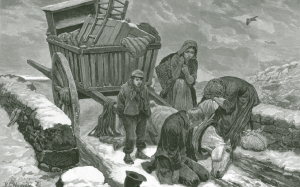Museum eye: The Tenement Experience
The Tenement Experience 14 Henrietta Street, Dublin 1 www.1913committee.ie by Tony Canavan Henrietta Street, off Bolton Street, is one of the oldest surviving streets in Dublin. Most of the houses were built in the 1740s; its proximity to the King’s Inn meant that it was a prestigious address and attracted many from the legal profession … Read more


